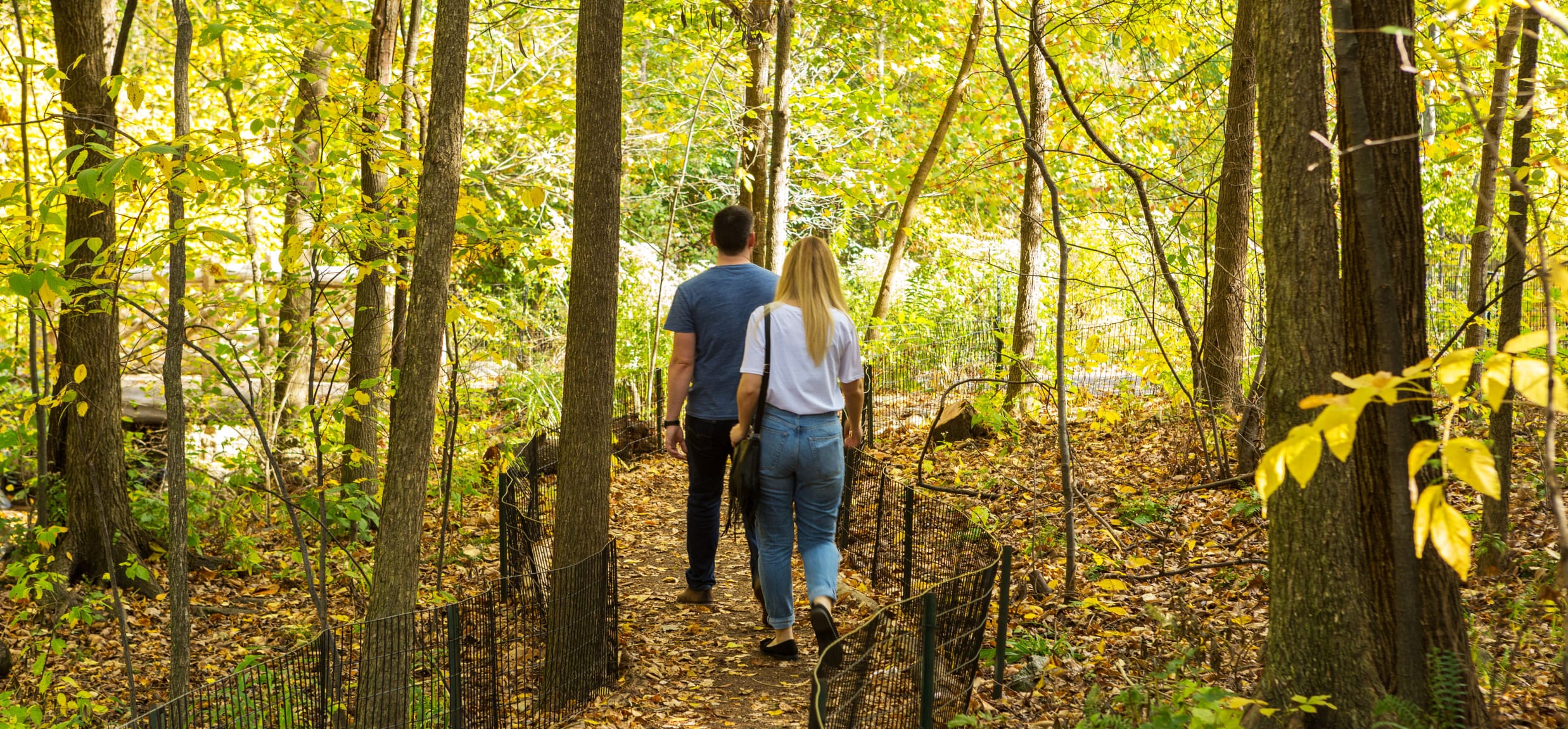Guide to Fall Foliage in Central Park

Each fall, many of Central Park’s roughly 18,000 trees transform into vibrant shades of yellow, orange, red, and more. It’s one of the Park’s most photogenic times of year, and we’re often asked about when and where to find the best fall foliage.
Check out our arborist-approved foliage tracker. We’ll let you know when and where to catch peak foliage in Central Park. Conservancy guides also lead fall foliage walks. Visitors will discover more about these landscapes and learn easy tips for identifying trees.
The science behind changing leaves
In preparation for winter, trees shut down their food-making process, called photosynthesis, and begin storing the energy they’ll need to make it through winter to the following spring. Usually, trees convert a bright green chemical called chlorophyll into sugar, which is what gives their leaves color. But without sufficient sun on short winter days to power this process, the trees must use moisture and sugar stored in their trunks for nutrients.
Once the trunk has filled with the necessary moisture and sugar to survive the winter and reach spring with adequate nutrition, the tree will seal off its leaves (a process called "abscission") to prevent photosynthesis. Then the leaves will begin to change. The colors you see in an autumn leaf are the result of certain always-present chemicals (carotenoids, flavonoids, and anthocyanins) becoming visible as the leaf's chlorophyll decreases and breaks down.
What makes Central Park’s foliage season different
As days become shorter, trees will detect the oncoming winter not necessarily by colder temperatures, but by the angle at which the rising and setting sun hits their leaves. This has a unique effect on Central Park's trees which are often obscured by many shadows cast by surrounding buildings. As a result of the light and temperature gradient, the trees often have a distorted sense of the seasons, meaning Central Park frequently experiences a later foliage turn than other parts of New York.